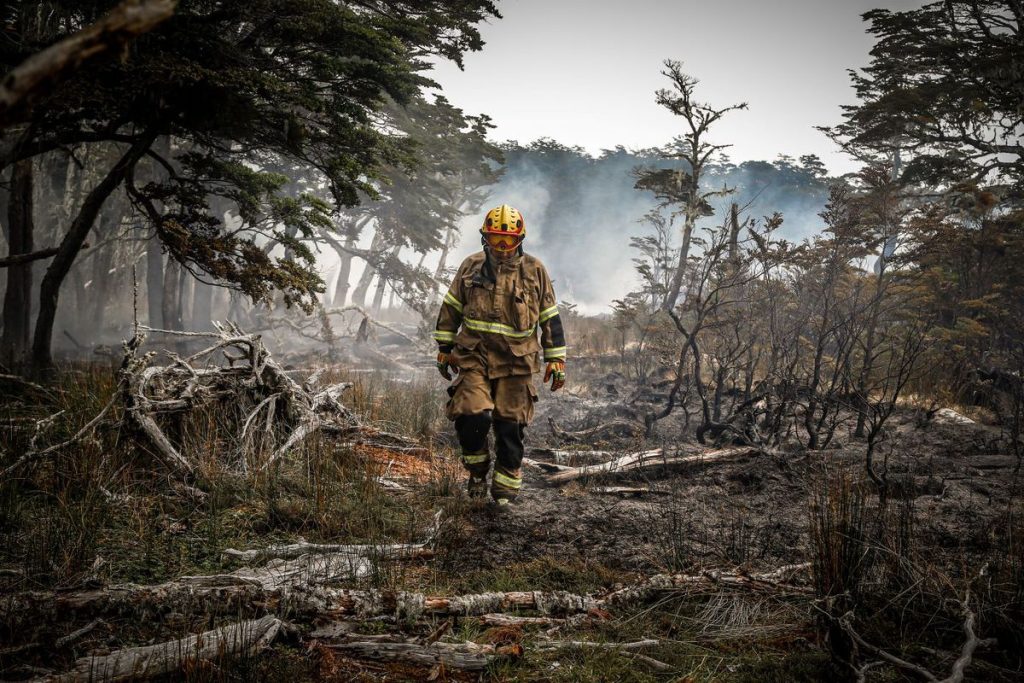The Urgent Need for Ecosystem Regeneration After Wildfires
Wildfires are devastating natural disasters that leave vast landscapes scorched and ecosystems disrupted. The aftermath of a wildfire presents a unique challenge: the regeneration of these ecosystems and the restoration of soil health. The process of rehabilitating fire-affected lands is critical not only for the environment but also for human societies that depend on these ecosystems.

The first step in land recovery after a wildfire is understanding the scale of damage. Experts conduct thorough assessments to evaluate soil fertility, erosion levels, and the impact on local flora and fauna. This assessment informs the development of tailored restoration plans that consider the specific ecological characteristics of the area.
Soil degradation is a major concern post-wildfire. The intense heat of the flames can alter the soil structure, leading to increased water runoff, erosion, and decreased water retention. To address this, restoration efforts focus on erosion control measures such as planting native vegetation and implementing contour plowing techniques. These strategies help stabilize the soil, preventing further degradation.
Native plant species play a crucial role in the recovery process. They are adapted to the local climate and soil conditions, making them more resilient to disturbances like wildfires. Replanting native species not only supports ecosystem recovery but also provides habitat and food sources for wildlife, aiding in overall biodiversity restoration.
In addition to direct intervention, passive restoration strategies are employed to allow natural processes to take place. This includes letting natural plant succession occur and allowing natural seed dispersal by wind and animals. These approaches aid in rebuilding complex ecosystems that are more self-sustaining in the long run.
In conclusion, the regeneration of fire-affected lands is a multifaceted endeavor that demands a comprehensive understanding of ecosystems and soil dynamics. By combining active and passive restoration strategies, experts can work towards rejuvenating landscapes, promoting biodiversity, and ensuring the sustained health of ecosystems and communities.
Balancing Ecological Recovery and Human Interaction in Post-Wildfire Soil Restoration
Post-wildfire soil restoration is a complex process that involves not only ecological considerations but also careful planning for human interactions within these rejuvenated landscapes. Striking a balance between ecosystem recovery and human engagement is crucial for the long-term success of restoration efforts.
One key challenge is preventing invasive species from colonizing the burned areas. Invasive plants can outcompete native vegetation and hinder natural regeneration processes. Restoration experts collaborate with local communities to implement monitoring programs that detect and manage invasives, thereby ensuring the return of native plants and wildlife.
Human activities in fire-affected areas can both aid and hinder restoration efforts. Recreation, for instance, is a common human interaction with these landscapes. Managed recreation can be integrated into restoration plans, allowing people to experience the healing power of nature while minimizing further disturbance to fragile ecosystems.
Educational initiatives also play a pivotal role. Engaging local communities and raising awareness about the importance of ecosystem recovery can foster a sense of stewardship. Citizens become more likely to support restoration projects and adhere to responsible behavior, ultimately contributing to the success of restoration efforts.
Soil erosion prevention is an integral aspect of restoring fire-affected lands. Implementing erosion control structures, such as check dams and contour trenches, helps stabilize the soil and reduce sediment runoff into water bodies. This not only protects aquatic ecosystems but also enhances water quality for both wildlife and human communities downstream.
In summary, post-wildfire soil restoration requires a holistic approach that considers both ecological needs and human interactions. By involving communities, addressing invasive species, promoting responsible recreation, and prioritizing erosion control, experts can create a harmonious balance that ensures the successful recovery of ecosystems while providing meaningful experiences for people.

Sustaining the Future: Long-Term Benefits of Post-Wildfire Soil Restoration
While the immediate aftermath of a wildfire is marked by destruction, the process of post-wildfire soil restoration offers the opportunity to create more resilient and vibrant ecosystems. The benefits of investing in restoration efforts extend far beyond the initial recovery phase, contributing to the long-term sustainability of landscapes and communities.
Soil restoration not only rejuvenates landscapes but also enhances carbon sequestration. Burned soils release carbon dioxide into the atmosphere, contributing to climate change. By implementing restoration strategies that improve soil structure and nutrient content, experts can mitigate carbon emissions and promote healthier, carbon-rich soils.
Biodiversity conservation is another significant outcome of post-wildfire soil restoration. By focusing on native plant species and creating diverse habitats, experts support the return of a variety of wildlife species. This not only enriches the ecological fabric of the area but also contributes to the overall health of ecosystems.
Water management is closely linked to soil restoration. Fire-affected lands are prone to increased runoff and erosion, which can lead to water pollution and reduced water availability. Restoration efforts that focus on soil stabilization and vegetation cover help regulate water flow, prevent sedimentation, and enhance water quality.
Sustainable land use planning is essential in the wake of wildfires. Communities and local authorities can collaborate with restoration experts to develop plans that incorporate fire-resistant landscaping, proper zoning, and the protection of natural firebreaks. These measures reduce the risk of future wildfires and their destructive impacts.
In conclusion, post-wildfire soil restoration is not just about recovering from disaster; it is about investing in the future resilience of ecosystems and societies. By improving carbon sequestration, promoting biodiversity, enhancing water management, and implementing sustainable land use practices, experts lay the foundation for a more sustainable and prosperous future.
